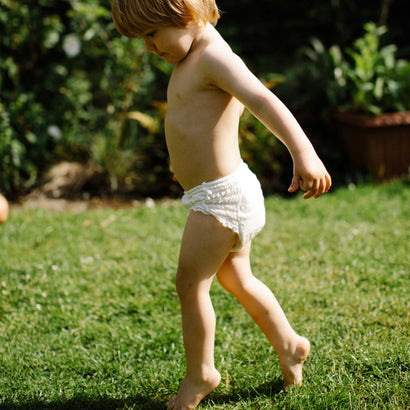Daylight Savings Time (DST)—that twice-yearly clock change that either gives us an extra hour or takes one away—affects everyone’s routine, including your little one’s precious sleep schedule. But what is it exactly, and how soon is the next time change?
DST shifts our clocks forward an hour in spring (“Spring Forward”) and back an hour in fall (“Fall Back”) to make better use of daylight. If you’ve been wondering how many days until daylight savings or when the next change is coming, you’re not alone! DST impacts adults and babies alike, with even minor time changes having a surprising impact on our internal clocks.
Daylight Savings Baby Sleep: Tips for a Smooth Transition
When it comes to daylight savings baby sleep, any change in schedule can throw off a baby’s delicate routine. Adjusting can be a challenge, but with a few tips, the transition can go a lot smoother.
Here are some simple strategies:
- Stick to a Consistent Routine: Keep bedtime routines steady, even if the time changes. Familiar activities like reading, lullabies, and dimming the lights signal that sleep is near.
- Gradual Time Shifts: Start moving bedtime by 10-15 minutes each day a few days before DST. This gradual shift helps babies ease into the new schedule with less fuss.
- Embrace Natural Light: In the morning, open the curtains to let in sunlight. Exposure to natural light helps reset everyone’s internal clock and sets up babies for better naps and bedtime.
A consistent routine (and a little patience) can make a world of difference when the clocks change.

Baby Sleep and Daylight Savings: Spring Forward Strategies
For babies, the “Spring Forward” change can be a tricky adjustment, as it requires waking up an hour earlier. Here’s how to handle babies and daylight savings spring forward like a pro:
- Shift Sleep Gradually: A week before DST, begin moving bedtime and wake-up time by 10-15 minutes earlier each day.
- Maximize Morning Light: Morning light exposure tells the body it’s time to start the day, reinforcing the new schedule. Try to spend a few minutes outside or near a sunny window.
With these small shifts, “Spring Forward” can feel less like a major sleep disruption and more like a gentle adjustment.
Baby Sleep and Daylight Savings: Fall Back Tips
“Fall Back” is usually the easier of the two, as it gives everyone a chance to sleep in a little longer. But it can still impact babies and daylight savings fall back, so here’s how to make the most of this transition:
- Adjust Slowly: Move bedtime 10-15 minutes later each night in the week leading up to the time change. This way, the shift will feel gradual rather than sudden.
- Maintain Bedtime Rituals: Keep bedtime activities consistent, even with the extra hour. Familiar routines signal that sleep is coming, helping babies settle into the “new” time.
With a few minor changes, “Fall Back” can be an easy, relaxed transition.
How to Adjust Baby Bedtime Routine for Daylight Savings Sleep
When it comes to DST, adapting how to adjust bedtime for daylight savings can be the difference between a seamless shift and a few sleepless nights. Here’s how to approach it:
- Ease into New Routines: Small adjustments go a long way. Shifting bedtime by 10-15 minutes each night a few days before DST helps babies ease into the change.
- Community Insights: Reach out to other parents for tips and support—sometimes hearing how others handle DST changes can provide just the guidance you need.
With these adjustments, you’ll be ready to keep your little one’s routine on track through every DST change, making the transition smoother for both of you.
Key Insights
Adjusting to Daylight Savings Time doesn’t have to mean sleepless nights for you and your little one. By making small, gradual changes to bedtime routines, embracing natural light, and maintaining consistency in your baby’s sleep habits, you can help them adapt smoothly to the new schedule.
Whether you’re navigating the “Spring Forward” or “Fall Back” shifts, remember that a bit of preparation goes a long way. With these tips in hand, you’ll be ready to handle DST transitions like a pro, keeping your family’s sleep routine steady all year long.









